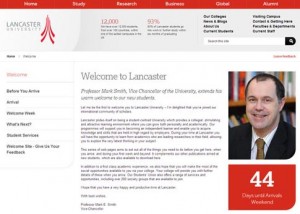 Why are you reading this sentence? And what makes you continue on to the next?
Why are you reading this sentence? And what makes you continue on to the next?
Is it the title that hooked you?
Or is it the cascade of words upon phrases, forming sentences – one leading into the other, dragging your eyes across the screen and hooking your interest with every passing line?
Research indicates that content must engage the reader within 8 seconds before they abandon the page on their way to another site.
Online readers are impatient, to say the least. So how can corporations use content to keep their website readers engaged?
Content-savvy corporations follow an advertisement technique termed AIDA.
A – Attention: Content must first attract the attention of the customer.
I – Interest: Content must then raise customer interest by presenting the benefits (as opposed to just the features) of the product/service.
D – Desire: After attracting attention and piquing the customer’s interest, content must convince customers that they desire the product/service – that it will satisfy their needs.
A – Action: Finally, content must lead the customer to take action. This step is often forgotten.
AIDA is an acronym representing a timeless recipe for the creation of engaging and, not to mention, persuasive content.
The AIDA technique is technically attributed to American advertising pioneer, E. St. Elmo Lewis circa 1903. Its roots, however, extend much deeper into the 19th century when Joseph Addison Richards unknowingly used the model in an 1893 business advertisement. C.P. Russel then formally published the concept of AIDA in an article in 1921.
The fact that the technique came so naturally to several of history’s finest marketing forerunners is proof of its innate persuasive style and natural ability to engage readers.
Currently, corporations battle Google’s ever-changing algorithms, which are graciously designed to keep quality content at the forefront of online marketing. Despite the confusing and constant flux of keywords, meta descriptions, and links, two things remain constant – ‘content is king’ and AIDA works. It engages, it persuades, and it sells.
With the rise in demand for quality content came rededicated interest in the creation of persuasive, selling content that people actually want to read. After all, content must entertain readers who, on average, only give you 8 seconds to catch, maintain, and satisfy their interest.
Below are several techniques that adhere to the AIDA concept. Use them to engage readers, persuade readers, and ultimately sell your products and services.
ATTENTION
- There are three ways to catch a reader’s attention. The first is by expressing opportunity. Raise intrigue by hinting at the possible gains your products can provide. Conversely, the second technique is to highlight how failure to purchase your product/service threatens their needs, values, and goals. Note that these threats must be genuine, and must be organically generated – they must come from an impartial source. Finally, contrast, such as intermittent short sentences and sudden changes in the tempo of the content will also gain attention.
INTEREST
- Much to our dismay, humans are inherently selfish. Therefore readers are more interested in content that adheres to their interests. This highlights the importance of knowing your target audience. If you can address the interests that lie behind their attitudes, positioning and goals, then you are sure to engage their interest.
DESIRE
- A seemingly endless amount of research indicates that the Scarcity Principle is a sure way to generate desire in a reader. After all, desire is defined as the feeling one gets when they want something they don’t have. So, if you make something they want seem difficult to obtain (i.e. ‘limited time only’ sales and ‘limited editions’) they will want the product more. Thus, make your product scarce, and your paying customers will become abundant.
ACTION
- Make the reader take action – this is obvious. But how? A simple way to do this is to use action verbs in your content. Action verbs generate more interest than passive verbs.
Creating engaging web content is just as much an art as it is a science. By applying the above technique, corporations can align their content with the attention, interests, and desires of their target audience, subsequently leading them to take action.
Recommended Reading:
Ferrell, OC and Hartline, M (2005). Marketing Strategy. Thomson South-Western. ISBN 0-324-20140-0.
Handley, A & Chapman, CC (2011). Content Rules. John Wiley & Sons, New Jersey. ISBN 978-0-470-64828-5
Scott, DM (2011). The New Rules of Marketing & PR. John Wiley & Sons, New Jersey. ISBN 978-1-118-02698-4
Bly, RW. (2005). The Copywriter’s Handbook. St. Martin’s Griffin, New York. ISBN 978-0-8050-7804-6


